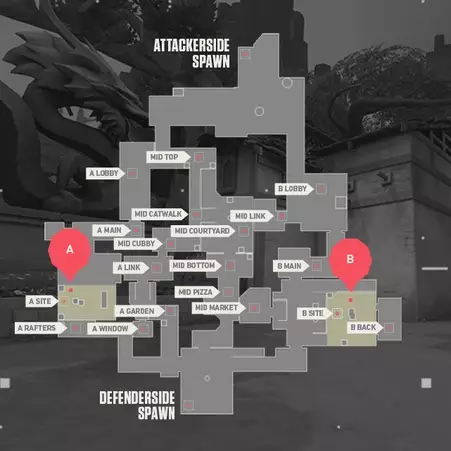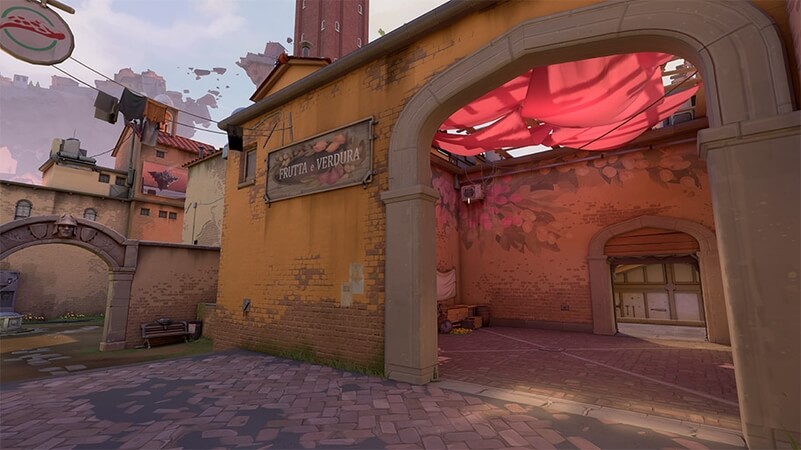Discover tactical insights and strategies for mastering The Ascent, a Valorant map fusing historic charm with high-tech gameplay. Sharpen your skills now!
In the rapidly evolving landscape of competitive gaming, precision and strategy are paramount, particularly in the realm of Valorant, where every decision can alter the course of victory. Today, you are invited to explore the intricacies of The Ascent Valorant Map, a battlefield that demands tactical prowess and offers an arena where sharpshooters and tacticians alike can showcase their expertise. As you navigate through its labyrinthine corridors and control points, your understanding of Ascent’s unique layout and strategic vantage points will become as crucial as your reflexes, defining the thin line between triumph and defeat in this high-stakes environment.
Overview of Ascent
In-game location and lore
As you explore the universe of Valorant, you’ll discover that Ascent is set in a picturesque, futuristic version of Italy. It’s imbued with rich cultural references, such as the Renaissance architecture that is interwoven with futuristic infrastructure and technology. The lore suggests that Ascent is a pivotal location within the Valorant universe, with the map being a central point for the conflict between the Valorant protocol and their adversaries. Its significance is highlighted through the strategic importance that both attacking and defending teams place on controlling it.

Haven minimap – copyright Riot Games
Map design and layout
The design of Ascent revolves around a large, central area that branches out into the two primary bomb sites, commonly referred to as A and B. Your experience on Ascent will be characterized by its dual nature—a blend of confined spaces and open areas—which creates a dynamic gameplay environment. The map is well-balanced in terms of access points and sight lines, with both bombsites offering unique challenges that you must navigate strategically.
Ascent’s unique features
Ascent stands out with its unique features, such as its interactive doorways at both bombsites which you can close and reopen. These doors add an extra tactical layer, as they can be used to shut off key pathways or create new angles for defense. Another special characteristic of Ascent is the widespread presence of destructible terrain, notably at the center of the map, which you can use to create sightlines or deny area access.
Ascent’s Map Design
Aesthetic and thematic elements
When you step onto Ascent, you’ll notice an aesthetic that combines the old with the new. The thematic elements reflect a town that has embraced technological advancements while retaining its historical charm. Ivy-covered walls, quaint shops, and cobblestone paths juxtaposed with sleek, clean lines of advanced machinery and holographic interfaces give Ascent a unique feel. This merger not only makes for a visually appealing map but also contributes to the tactical depth, providing both concealment and clarity in different areas.
Mid-control and its importance
In terms of gameplay, mid-control is crucial on Ascent. As the team in command of this central area, you gain access to multiple rotation paths and can apply pressure to either bombsite with ease. The importance of mid lies in its connectivity to both sites and key locations such as Market and Catwalk. Controlling mid allows for quick pivots during an attack and provides defenders with rapid rotation routes.
Open areas versus tight corners
On this map, you’ll engage in battles across a mix of open spaces and narrow pathways. The open areas, such as Mid and B Main, offer long sightlines for sniper duels and area denial through abilities. In contrast, tight corners in places like A Lobby and B Link necessitate close-quarter combat and heighten the emphasis on angle checking and strategic utility usage.
Key Locations on Ascent
Bombsite A
Bombsite A is a quintessential locale on Ascent, featuring a large open area for planting the spike surrounded by elevated positions like Heaven. As an attacker, you’ll need to manage these sightlines carefully. Defenders, on the other hand, can use the A door to isolate the site from A Main or control the area from Garden and Heaven.
Bombsite B
Conversely, Bombsite B presents a more enclosed combat space with a boathouse providing cover for defenders. This site emphasizes the importance of entries and post-plant positioning. The B door can swing rounds in either team’s favor, acting as a crucial barrier or strategic asset depending on its control.
Mid Market
Mid Market serves as a central junction that connects B Main, Mid, and Defender Spawn. As one of your responsibilities, you must be aware of how easily adversaries can flank from this position, necessitating a keen sense of audio cues and timely checks of this area.
Mid Top
Mid Top, or Mid Catwalk, provides an overwatch position onto the Mid area. You can utilize this platform to snipe or cast abilities into Mid, or employ it as a vantage point to prevent enemy advances. Mastering control of Mid Top often spells the difference between a successful round and a swift defeat.
Defender Spawn
Your team’s ability to navigate through Defender Spawn, which directly opens to both bombsites through different paths, can effectively diminish offensive pushes or bolster defensive stands. Understanding when to rotate and holding off attackers who breach through Market or Mid is paramount to safeguarding the integrity of your defense.
Attacker Spawn
When beginning on the attacking side, your spawn area offers multiple pathways to either bombsite. The consideration you take in your opening moves and the routes chosen can set the tempo for how the round will unfold.
Strategic Approaches
Attacking strategies
On Ascent, your attacking plan should capitalize on gaining mid control to divide the defenders and create opportunities for split pushes. You may also employ strategies like quick rushes or slow defaults to keep the opposing team guessing. Adaptability and communication will aid in finding and exploiting weaknesses in the defender setups.
Defensive setups
Defensively, you want to consider setups that allow you to maintain control of key areas while also remaining adaptable to attacker rotations. Positioning players at versatile angles in Mid, A Short, and B Main can yield successful defenses. Utilize utility to disrupt enemy plans, and always be ready to rotate when the situation calls for it.
Rotations and timing
Understanding the timing of rotations on Ascent is crucial. A delayed rotation can result in a loss of site control and a compromised round. You should synchronize your team’s movements and use audio cues to inform when to rotate, ensuring you can reinforce a besieged site or retake strategically.
Ascent Callouts
Common callout locations
Familiarizing yourself with common callouts such as Garden, Pizza, and B Main is significant for effective team communication. Precise callouts lead to accurate mental maps of player locations and can drastically improve your team’s coordination.
Understanding callout importance
Recognizing the importance of callouts cannot be overstated. It’s not just about identifying enemy locations; it’s also about conveying plans, strategies, and alerting teammates to potential threats. Clear communication fosters better team play and enhances your chance of winning.
Improving team communication with callouts
To improve team communication, practice makes perfect. Engage in clear, concise, and continuous dialogue with your teammates. Rehearse callouts during practice sessions, and strive to be as accurate as possible. Effective communication is a skill that, once honed, can elevate your gameplay significantly.
Choke Points
Identifying choke points
Choke points on Ascent, such as B Main Entrance and A Short, are areas where combat is funneled due to narrow pathways. Identifying these allows you to predict enemy movement and prepare defenses accordingly.
How to control and defend choke points
Control choke points by using utility to deter enemy advances or take early engagements to catch them off-guard. Set up crossfires with teammates to make it difficult for enemies to push without being punished.
Utilizing utility to exploit choke points
Exploiting these choke points with abilities such as smokes, molotovs, or traps can delay pushes, cause damage, and even secure kills. Coordinate with your team on how to best deploy your utility to maintain control over these crucial areas.
Economy and Buy Rounds
Importance of economy on Ascent
Your economy will impact your ability to purchase weapons and abilities, which is integral to your success on Ascent. Managing funds to ensure that your team can execute buy rounds with full equipment is essential.
Buy round versus save round strategies
During buy rounds, you can employ a wider range of strategies due to the availability of better weaponry and abilities. On save rounds, a more conservative or unpredictable approach may be necessary to mitigate the disadvantage. This might include stacking a site or going for aggressive, surprise plays.
Impact of economy on map control
The state of your economy affects the level of control you can exert over the map. A well-funded team can enforce their will with superior equipment and abilities, while an ill-equipped team must rely on strategy and sharpshooter precision to overcome their limitations.
Agent Composition
Top agents to pick on Ascent
Ascent’s diverse landscape favors agents who excel in both open and confined environments. Agents like Jett can easily navigate the vertical dimensions, while controllers like Omen are pivotal for obscuring long sightlines. Initiators such as Sova can gather crucial intel with recon abilities.
Synergies between agents
Your team’s agent composition should explore the potential synergies between abilities. Combining smoke abilities with area-denying abilities can create powerful defenses or facilitate unexpected offensive plays. Communicate with teammates to create combinations that are greater than the sum of their parts.
Counter-picks and strategic agent selection
Be mindful of the enemy team’s composition and adjust your agent selection to counter their tactics. If they favor an aggressive playstyle, consider agents with stalling or area denial abilities. Strategic agent selection can disrupt the enemy’s game plan and provide your team with a significant edge.
Ultimate Abilities and their Impact
Game-changing ultimates on Ascent
Ultimate abilities are game-changers on Ascent. For instance, a well-timed Hunter’s Fury from Sova can clear out defenders from crucial locations. Recognize the potential of your team’s ultimates and plan around them to maximize their impact.
Strategic usage of ultimates
Consider the timing and application of each ultimate for both attacking and defending scenarios. Hold onto your ultimate for a pivotal round where it can guarantee a plant or a retake. Communication is key in determining when to deploy these powerful abilities.
Ultimate economy on Ascent
Developing a sense of ultimate economy is pivotal. Track which ultimates are available and plan your rounds accordingly. This includes baiting out enemy ultimates or saving yours for critical rounds to shift the momentum in your favor.
Patches and Updates
Historical changes to Ascent
Ascent has seen various changes since its introduction into Valorant. Each update has affected the balance and meta-game, adjusting aspects such as sightlines, cover objects, and ability effectiveness on specific areas of the map.
How patches have affected gameplay
Patches have refined play styles and strategies on Ascent. For example, updates might bolster defensive capabilities by altering the geometry of a bombsite or mid, which in turn requires new approaches for successful attacks.
Community response to updates
The community’s response to these updates often shapes future changes. Player feedback on elements like the fairness of angles or the overall flow of the map drives the ongoing development of Ascent. Stay informed on community discussions and patch notes to adapt swiftly to the evolving landscape of this key battleground in Valorant.
